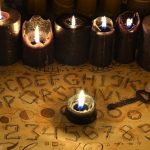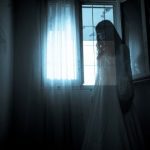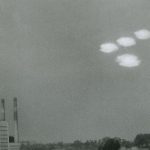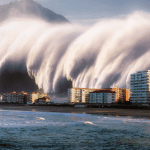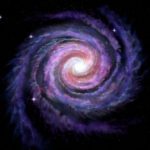 Mysteries
Mysteries  Mysteries
Mysteries  History
History 10 Surprising Stories About the Texas Rangers
 Humans
Humans 10 Philosophers Who Were Driven Mad by Their Own Theories
 Miscellaneous
Miscellaneous 10 Video-Game-Worthy Weapons and Armors from History
 Weird Stuff
Weird Stuff 10 Psychics Who Accurately Predicted Wartime Events
 The Arts
The Arts 10 Pieces of Art Inspired by a Broken Heart
 Health
Health 10 Science Fiction-Sounding New Medical Treatments
 History
History 10 Surprising Facts About the Father of Submarine Warfare
 Space
Space Ten Astonishing New Insights into Alien Worlds
 Weird Stuff
Weird Stuff 10 Bizarre Summer Solstice Rituals Still Practiced Today
 Mysteries
Mysteries Top 10 Haunting Facts About the Ghost Ship MV Alta
 History
History 10 Surprising Stories About the Texas Rangers
 Humans
Humans 10 Philosophers Who Were Driven Mad by Their Own Theories
Who's Behind Listverse?

Jamie Frater
Head Editor
Jamie founded Listverse due to an insatiable desire to share fascinating, obscure, and bizarre facts. He has been a guest speaker on numerous national radio and television stations and is a five time published author.
More About Us Miscellaneous
Miscellaneous 10 Video-Game-Worthy Weapons and Armors from History
 Weird Stuff
Weird Stuff 10 Psychics Who Accurately Predicted Wartime Events
 The Arts
The Arts 10 Pieces of Art Inspired by a Broken Heart
 Health
Health 10 Science Fiction-Sounding New Medical Treatments
 History
History 10 Surprising Facts About the Father of Submarine Warfare
 Space
Space Ten Astonishing New Insights into Alien Worlds
 Weird Stuff
Weird Stuff 10 Bizarre Summer Solstice Rituals Still Practiced Today
10 Books That Popularized Paranormal Phenomena
Throughout history, humanity has always been fascinated by the unexplained. From ghosts and witches to extraterrestrial beings and mythical islands, the paranormal occupies a vast and enigmatic space in our imaginations. According to a 2024 Gallup survey, nearly 75% of Americans believe in some form of paranormal phenomena, such as extrasensory perception (ESP), haunted houses, or communication with the dead.
The persistence of these beliefs suggests a deep-rooted intrigue that transcends time and culture. While many of these beliefs trace their origins to ancient traditions, the modern surge in public interest can be attributed to a collection of groundbreaking books that helped shape and popularize our current understanding of the paranormal.
These ten books, spanning centuries and continents, not only influenced pop culture but also laid the groundwork for paranormal investigators, TV shows, and films. Their contributions continue to spark debates, inspire media, and feed our curiosity about what lies beyond the known.
Related: Top 10 Compelling Cases Of Paranormal Phenomena
10 Malleus Maleficarum (1486)
The Malleus Maleficarum, or the Hammer of Witches, remains one of the most infamous books in the history of witchcraft persecution. Written by two Dominican inquisitors, James Sprenger and Henry Kramer, this text served as a guide for the identification, interrogation, and prosecution of witches during the Inquisition. With its rigid theological framework and grotesque descriptions of alleged witchcraft practices, the Malleus escalated the witch hunts that plagued Europe from the 15th to the 18th centuries.
The book is divided into three sections. The first two parts explore theological and philosophical issues related to witchcraft, with bizarre concerns about whether sex demons can engender and give birth to children and whether witches are able to create the illusion that a man’s penis has been detached from his body. The final section offers an instruction manual on how to extract confessions—often through torture—and secure convictions.
The influence of the Malleus was catastrophic, leading to the persecution of tens of thousands of individuals, primarily women, accused of witchcraft. This grim text continues to shape the popular image of witches and serves as a chilling reminder of the darker side of humanity’s quest for order in the face of the unknown.[1]
9 The Book of the Damned (1919)
Charles Fort’s The Book of the Damned is often cited as the genesis of modern paranormal studies. Rather than adhering to conventional scientific explanations, Fort cataloged bizarre phenomena—ranging from rains of frogs and fish to strange lights in the sky—that he argued had been “damned” by science because they didn’t fit established norms. His concept of a “Super-Sargasso Sea,” a cosmic holding area from which these anomalies were occasionally released onto Earth, exemplifies his tongue-in-cheek yet provocative style.
Fort’s work resonated with readers who were tired of rigid scientific dogma and intrigued by the mysterious. His playful and irreverent approach laid the foundation for what would become known as “Fortean” phenomena, a term that describes unexplained events that defy rational explanation. Today, the International Fortean Organization continues Fort’s legacy by documenting strange occurrences worldwide, ensuring that his influence on the paranormal remains as strong as ever.[2]
8 Early British Trackways (1922)
Alfred Watkins’s Early British Trackways introduced the concept of ley lines, later becoming a cornerstone of modern earth mysteries. Watkins theorized that ancient British cultures created straight-line trackways that aligned with significant landmarks such as mounds, stones, and churches. His discovery of these lines, which he called “leys,” was initially interpreted as evidence of early trade routes. However, subsequent esoteric thinkers and paranormal enthusiasts adopted Watkins’s findings. They reimagined ley lines as mystical energy grids running across the globe.
Despite being dismissed by historians and archaeologists, Watkins’s work continues to hold a powerful allure for those interested in geomancy, spiritual landscapes, and the idea of a hidden, energetic network underlying the Earth. His legacy lives on through the enduring fascination with ley lines, which appear in literature, television, and conspiracy theories.[3]
7 The Magic Island (1929)
William Seabrook’s The Magic Island introduced the Western world to the mysteries of Haitian Vodouo, capturing the imagination of readers with its sensational tales of zombie resurrection and occult rituals. In this semi-autobiographical account of his travels in Haiti, Seabrook presents Vodou—known popularly as Voodoo—as both a spiritual practice and a supernatural force capable of transforming the living into the undead. His vivid descriptions of blood-drinking ceremonies, soul transference, and possession rituals sparked widespread interest in the dark side of Caribbean culture.
Though criticized for its exploitative portrayal of Voodoo, The Magic Island was instrumental in introducing the concept of the zombie to popular culture. Seabrook’s portrayal of the living dead predates the cinematic zombies of George Romero and others. It remains a touchstone for anyone interested in the occult, horror fiction, or Haitian spirituality.[4]
6 Chariot of the Gods (1968)
Erich von Däniken’s Chariot of the Gods unleashed a wave of fascination with the idea that ancient civilizations were visited by extraterrestrial beings. Von Däniken posited that the marvels of the ancient world, such as the Egyptian pyramids, the Nazca Lines, and the Mayan ruins, were not the work of early human ingenuity but advanced alien visitors. He theorized that these “gods” provided the technological know-how necessary for these remarkable achievements.
Although his theories have been widely debunked by archaeologists and historians, von Däniken’s book became a global sensation, inspiring a generation of UFO enthusiasts and spawning a new genre of pseudoscientific inquiry. His ideas continue to influence popular culture, particularly through television shows like Ancient Aliens, and his theories remain popular despite their controversial nature.[5]
5 The View over Atlantis (1969)
John Michell’s The View over Atlantis melds mystical speculation with historical revisionism to propose that Atlantis was not a mythical sunken continent but rather a worldwide network of sacred sites connected by ley lines. Michell drew on esoteric traditions, Chinese dragon lines, and Platonic philosophy to suggest that these sacred sites formed an energy grid that ancient civilizations deliberately constructed.
Despite its rejection by mainstream scholars, The View over Atlantis had a profound impact on the earth mysteries movement and inspired generations of spiritual seekers, geomancers, and ley-line hunters. Michell’s romantic vision of an ancient, harmonious world hidden beneath the chaos of modern civilization continues to resonate with those searching for meaning in the natural world.[6]
4 The Bermuda Triangle (1974)
Charles Berlitz’s The Bermuda Triangle cemented the mystery of this infamous stretch of ocean in the public consciousness. In his book, Berlitz chronicles numerous accounts of ships and aircraft that vanished without a trace while passing through the area, attributing these disappearances to unknown and potentially supernatural causes. Berlitz’s sensationalist narrative captivated readers, even as critics dismissed his explanations as pseudoscientific.
While Berlitz’s claims have been largely debunked, his book ignited a media frenzy around the Bermuda Triangle, leading to numerous documentaries, films, and books dedicated to exploring the mystery. Even today, the Bermuda Triangle remains a symbol of the unexplained, largely thanks to Berlitz’s work.[7]
3 Eros and Evil (1974)
In Eros and Evil: The Sexual Psychopathology of Witchcraft, R.E.L. Masters delves into the intersection of sexuality and witchcraft, exploring the notion that the hysteria surrounding witch trials was, in part, a manifestation of sexual repression and psychopathology. Masters examines the role of sex demons, possession, and erotic magic in the witchcraft trials, providing a lurid account of how these beliefs shaped both religious and secular responses to supposed witchcraft.
His study at times bogs down in questions pertaining to how female sex demons, or succubi, obtain semen from their male lovers. It continues with whether male sex demons or incubi can engender children, whether incubi and succubi can change sex, and the role of mental illness in what appear to be hallucinations and delusions. The book also opines on the dimensions, material composition, and temperature of demons’ “members” and the quantity and temperature of their semen if, indeed, they can produce this fecundating fluid.
While his work is controversial, Eros and Evil influenced scholarly and popular discussions about the psychological dimensions of witchcraft persecution. Masters’s provocative blend of history, sexuality, and the paranormal continues to intrigue those interested in the darker aspects of human behavior.[8]
2 The Interrupted Journey (1977)
John G. Fuller’s The Interrupted Journey is one of the earliest and most influential accounts of alien abduction, detailing the strange experiences of Barney and Betty Hill, who claimed they were taken aboard a UFO in 1961. Fuller’s meticulous account of their abduction—based on their memories recovered through hypnosis—became a landmark in UFO studies, inspiring countless abduction narratives in literature, film, and television.
Fuller’s book is notable for its detailed recounting of the Hills’ experiences, including descriptions of the extraterrestrial beings and their advanced technology. Although skeptics have challenged the veracity of the Hills’ account, The Interrupted Journey remains a cornerstone of UFO lore and helped shape the modern understanding of alien abductions.[9]
1 Ghost Hunters (1989)
Ghost Hunters by Ed and Lorraine Warren chronicles the lives of two of the most famous paranormal investigators of the 20th century. The Warrens, both devout Catholics, believed they had been chosen to confront the forces of darkness. Their investigations into haunted houses, demonic possessions, and cursed objects have become legendary, spawning numerous films, most notably The Conjuring series.
The book recounts some of the Warrens’ most famous cases, from haunted dolls to demonic possessions, and details their methods for confronting malevolent spirits. Despite controversies surrounding their methods and the authenticity of their cases, the Warrens have left an indelible mark on the field of paranormal investigation, influencing modern ghost hunters and the horror genre alike.[10]
